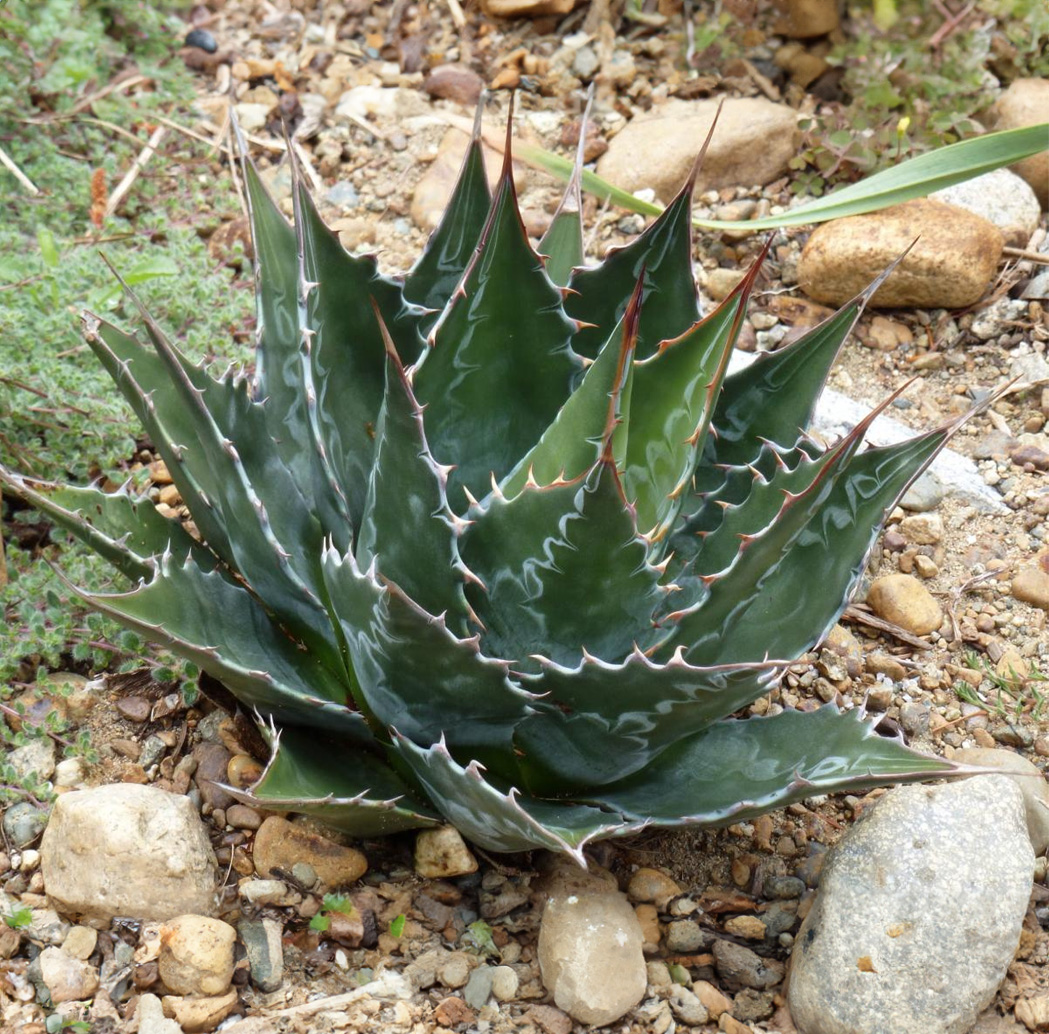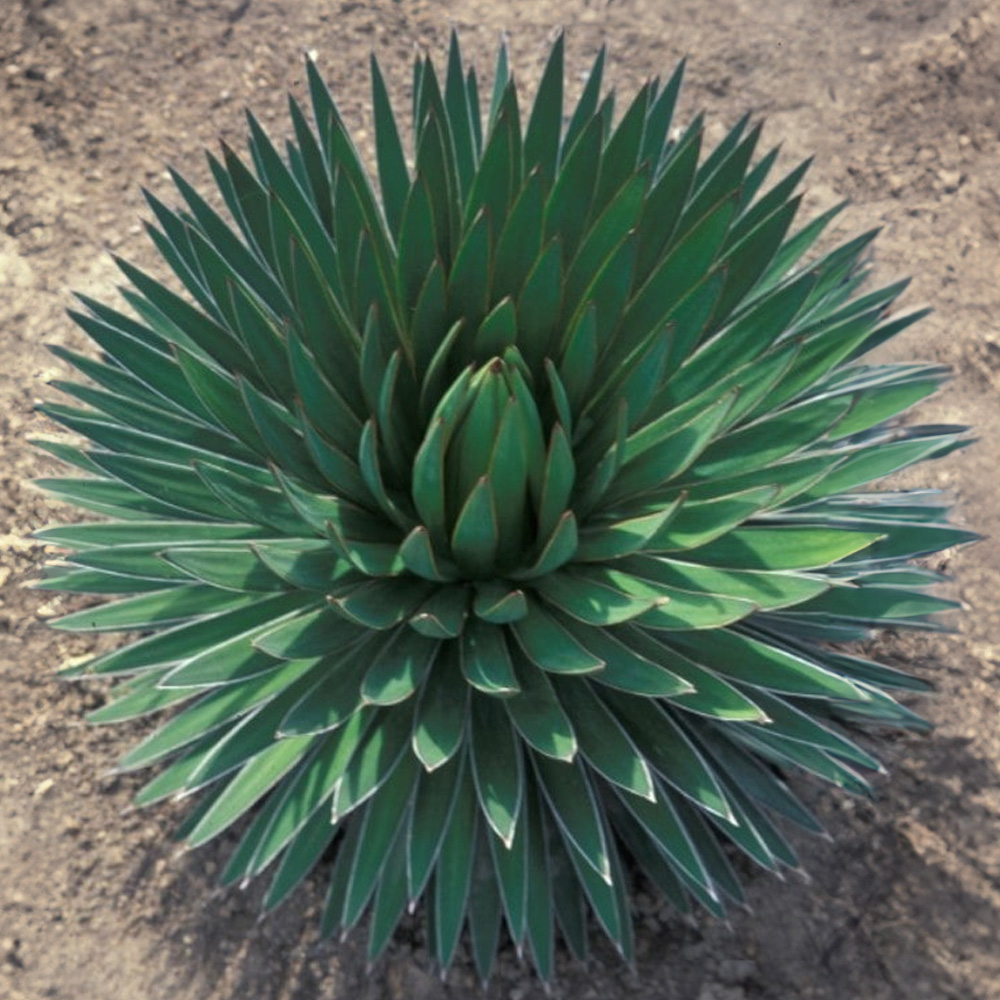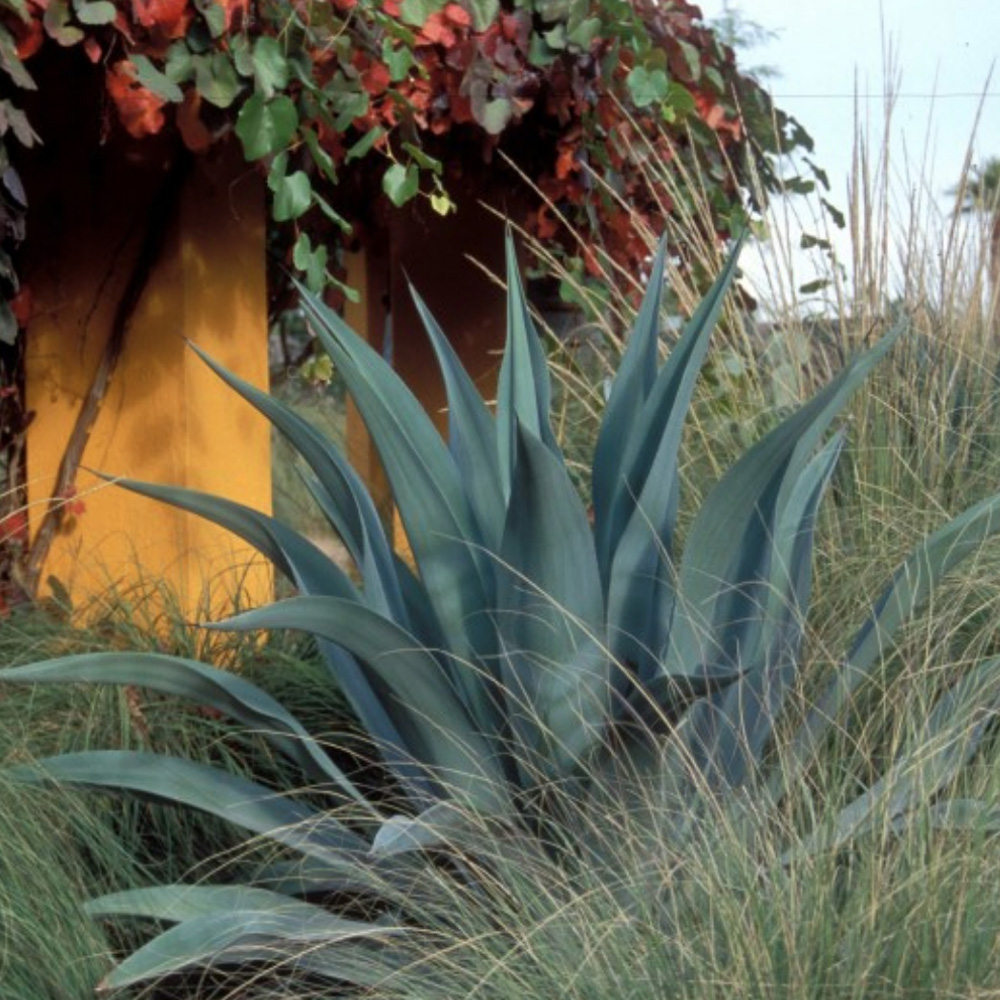Native to the Americas, dramatic Agave is the perfect companion for the Tucson landscape. Along with its striking leaves and architectural form, Agave is astonishingly drought-tolerant, making it an excellent choice for the hot and arid Sonoran Desert climate.
About Agave
Although leaf shape and color may vary, Agave leaves always radiate from a central point in a symmetrical rosette. The leaves are succulent and, most often, pointy at the tip. Some varieties have smooth leaves, while others possess leaves with teethed margins. Leaf color can range from deep green to bluish green to silvery blue to gray. Some varieties offer variegated leaves with yellow or white lines or edges. Agave is also available in a wide-ranging assortment of sizes, from impressively enormous to dainty and petite.
Grown primarily for its distinguished appearance, agaves do eventually flower at the end of their life cycle. The flower stalks tend to be imposing compared to the plant’s overall size, and it may take years, even decades, for an Agave to bloom. Depending on the species, flowers may be branched, like a tree, or unbranched. The flowers will form seed pods or bulbils, necessary for reproducing the plants. Once an Agave flowers, the main plant will die. But the plant leaves behind clones for propagating new Agaves. Agave flowers are an important nectar source for pollinators such as hummingbirds and bees.
Growing Agave
Whether grown in the ground or containers, whether grown as a specimen or grouped in drifts in the landscape, Agave requires a full sun site – direct sun – and prefers a low-humidity environment. Poor soil is not a problem, and Agave can tolerate nutrient-deficient soil quite well once established. Give your Agave a good start by amending the native soil with a bit of high-quality compost. This will help increase drainage, as sharp drainage is essential. Adding gravel or chicken grit to the planting area is also helpful. Fertilize lightly. Although succulent and therefore drought tolerant, Agave supplemental watering is infrequent but occasionally necessary, more so for potted plants than those in the ground.
Agave Varieties
With Agave, there is an unlimited selection of colors, shapes, forms, and sizes from which to choose. With so many Agaves available, it is hard to select our favorite varieties, but here we go…
- American Century Agave (Agave americana) – Its large size, 6 to 12 feet high, and narrow, long, wavy leaves make this an irresistible Agave for the West Coast landscape. With desirable blue-green foliage, this Agave is exceptionally winter hardy to the low teens.
- Blue Glow Agave (Agave’Blue Glow) – Beautiful small agave with blue-green leaves and yellow and red edged margins. A nice agave for small spaces, containers or to accent larger plants.
- Queen Victoria Agave (Agave victoria regina) – A most beloved dark-green, toothless Agave of manageable size, about 18 inches in diameter, the leaves sport attractive white markings on their sides and spike at their tip.
- Quadricolor Agave (Agave lophantha quadricolor) – This colorful agave has bright yellow leaves with a light bicolored green stripe down the center. They are a smaller agave, 2′ tall and wide, that make an attractive addition to any cactus garden or planter.
- Mountain Agave (Agave montana) – This lovely, apple-green agave with reddish-brown teeth grows up to 4′ tall and 5′ wide. Mountain Agave prefers full sun but will tolerate a part shade location and will grow best in soil that is well-drained, rich in organic matter, and regularly irrigated.
- Ocahui Agave (Agave ocahui) – A small to medium sized agave with a dense, tight rosette habit with narrow, dark green leaves. This Sonoran Desert Native can handle harsh heat and still provide a deep green and lush appearance.
- Twin Flowered Agave (Agave geminiflora) – A medium sized agave with a dense rosette of dark green leaves. This agave also offers a softer and more grass like appearance compared with other agaves. When planted in full sun the leaves are very stiff but are softer when planted in a shadier area.
- Whale Tongue Agave (Agave ovatifolia) – Light blue-grey leaves are slightly grooved and form a more open rosette than some other agaves. This particular agave benefits from some afternoon shade in low deserts.
- Weber’s Agave (Agave weberi) – This majestic agave can grow up to 10′ wide. There is some variability amongst plants regarding color, which may range from green to a slight blue color, and spines, very fine to no teeth on the leaf margins.
- Fox Tail Agave (Agaveattenuata) – A lovely, slow-growing Agave that will eventually grow to 4 feet high and looks like a blossoming flower with graceful, undulating, silvery-green leaves. The leaves have no teeth or terminal spine, making this Agave a dream to plant and care for. This Agave will tolerate moist or dry, well-drained soil.
Astonishing, dramatic, colorful, easy-care Agave will make a spectacular statement in your desert garden, whether planted in the ground or in containers scattered throughout the landscape. Have fun experimenting with new and exciting varieties.






